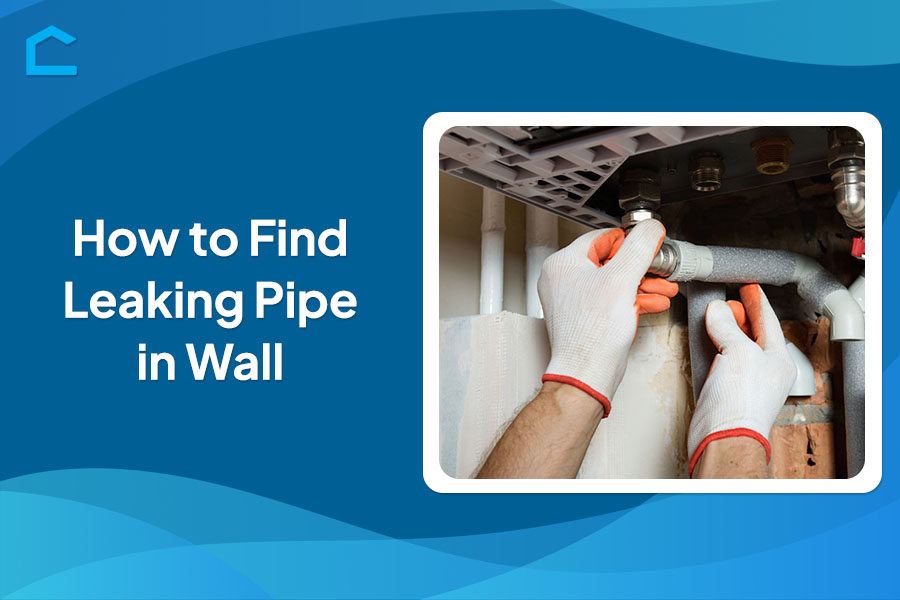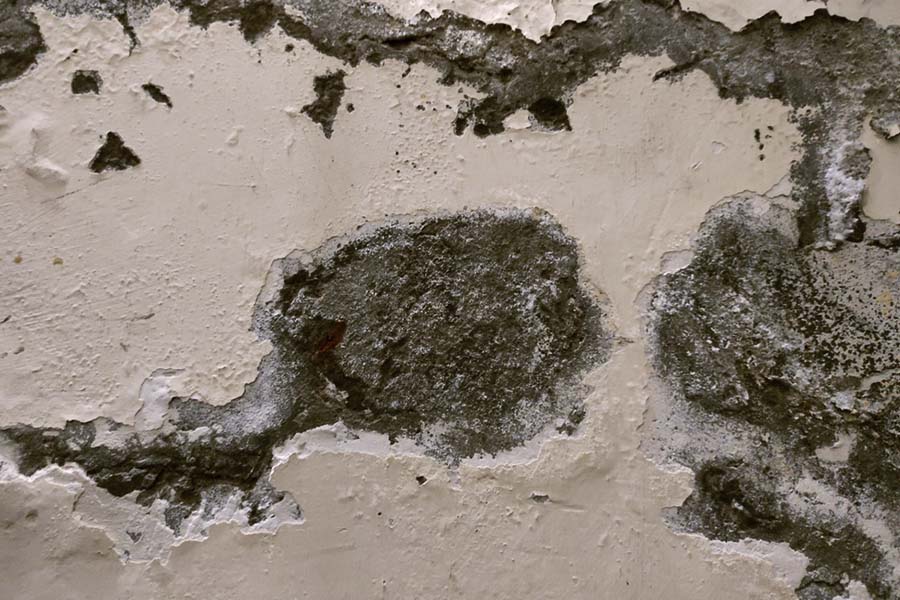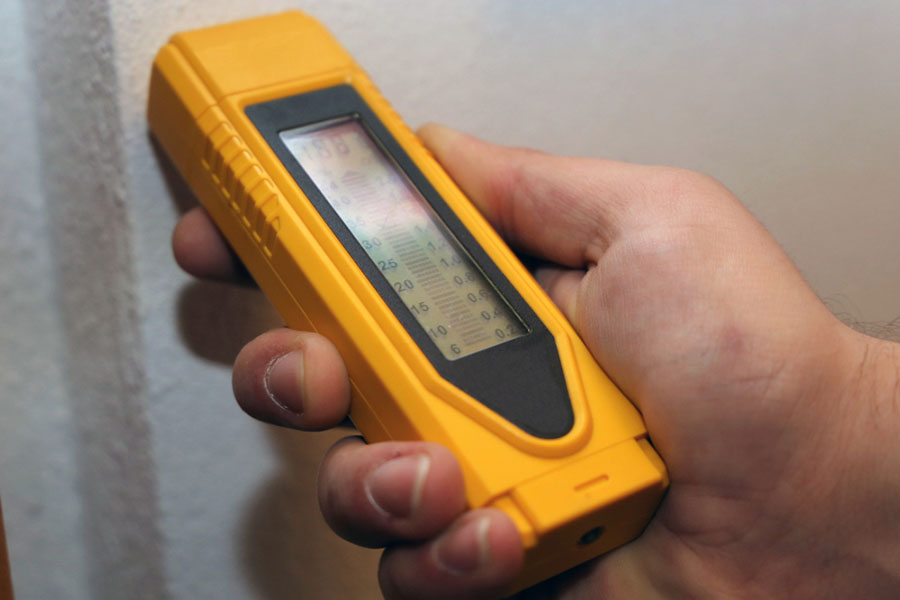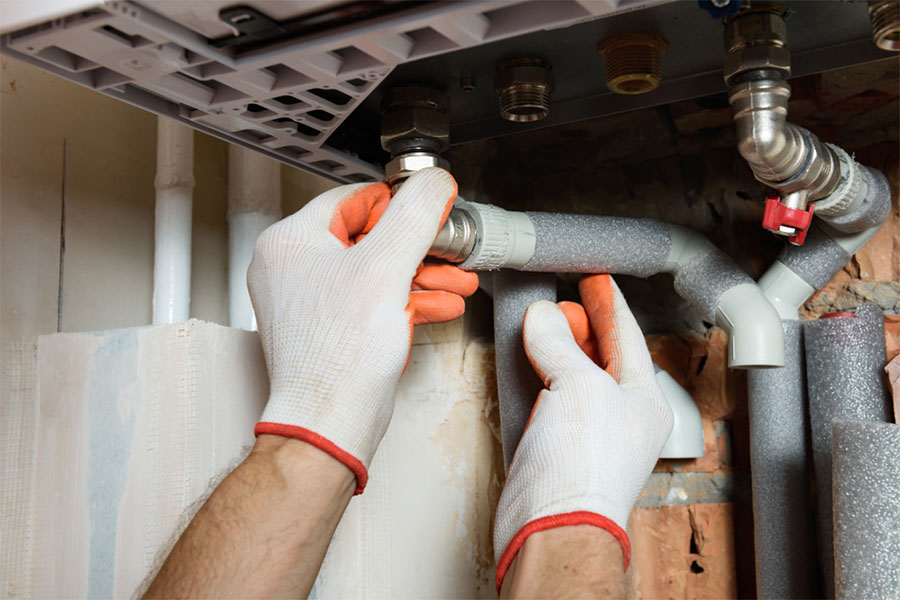How to Find Leaking Pipe in Wall

Few home maintenance issues cause as much frustration and potential for damage as a leaking pipe hidden behind walls, ceilings, or floors. While a persistent dripping sound or water stain may alert you to the problem, knowing how to find leaking pipe in wall can feel like an exercise in futility.
But don’t let the idea of cutting multiple holes in your drywall send you into panic mode. With some investigative work and the right tools, even novice DIYers can track down a concealed leak without causing excessive demolition.
In this guide, you’ll learn the essential steps to detect a leaking pipe in a wall, the signs to look for, and when it’s necessary to call a professional. By following a systematic approach, you’ll save time, money, and your sanity.
Let’s learn how to find a leaking water pipe in wall, and address the problem head-on before more severe damage occurs!

Source: shutterstock.com / Photo Contributor: Raj Shutter
Signs of a Leaking Pipe in a Wall
If you have a leaking pipe hidden within your walls, it can show up in various ways. You might notice an unexplained spike in your water bills, even if your usage hasn’t changed. Water stains or discoloration could spread on your walls and ceilings, and you might smell musty or moldy odors from damp areas.
Other signs include bubbling paint or peeling wallpaper due to moisture buildup. You might also find damp or wet spots on your walls and floors. Moreover, warped or buckling baseboards or flooring can indicate a hidden leak.
If you observe any of these signs, it’s crucial to get a professional inspection promptly. We must point out that addressing the leak quickly can prevent further damage to your home.
How to Find Leaking Pipe in Wall (Step-by-Step)
As said, detecting a leaking pipe hidden within a wall can be challenging, but it’s crucial to address it quickly to prevent extensive damage. By following a systematic approach, you can identify the signs of a leak and take the necessary steps to fix the problem. Now, here are the necessary steps you need to follow:
1. Turn off the water supply
You need to locate the main shut-off valve near the water meter or where the main water line enters your house. Turn the valve clockwise until it stops to completely shut off the water supply. This ensures no residual flow.
If your home has multiple shut-off valves, make sure to close them all. Shutting off the water will prevent further leakage and water damage.
2. Inspect for visible signs
Next, inspect for visible signs of a potential leak. Check walls and ceilings for any water stains, peeling paint, warped surfaces, mold growth, musty smells, or excessive condensation.
You can use a bright flashlight to carefully inspect dark or hard-to-reach areas behind furniture, cabinets, and appliances for any signs of moisture or water damage. We advise you to look closely at baseboards, corners, and seams where water stains may appear. These signs can help you identify the general area of the leak.
3. Use a moisture meter
If you don’t see any visible signs, use a moisture meter. This tool can detect elevated moisture levels in wall materials. Hold the meter against the wall surface. Higher readings indicate higher moisture content, which might signal a leak behind the wall.
Start at the areas you suspect and work your way outward. Check multiple points and mark any areas with high moisture readings. Most quality moisture meters will provide a percentage or a relative scale.

Source: shutterstock.com / Photo Contributor: U. J. Alexander
4. Employ an infrared camera
You should use an infrared camera to investigate further. These cameras detect temperature differences, highlighting cold spots on the walls that may indicate water presence. Cooler areas will usually appear blue or purple.
We suggest you slowly scan the walls, paying close attention to any temperature variations. Mark the cold spots for closer inspection. Infrared cameras can often detect moisture even before visible signs appear.
5. Listen for sounds of leaking water
Another method is to listen to the sounds of leaking water. Place your ear directly against the wall surface and listen carefully for any dripping or running water sounds within the walls.
The sound can help pinpoint the potential leak location. You may need to listen in multiple areas, so take your time. Running water often creates a hissing or trickling sound that’s audible through drywall.
6. Cut a small inspection hole
If the leak area is still not identified, you may need to cut a small inspection hole in the drywall. Use a drywall saw or utility knife to carefully cut a small hole in the suspected leak area.
Be cautious not to accidentally damage any pipes or wires behind the wall surface. We recommend starting with a small hole and gradually making it larger for visibility. Place a drop cloth or tarp below to catch any drywall debris.
Throughout this process, always exercise caution and use the right tools. You must wear protective gear like safety glasses and gloves when cutting into walls. Identifying a leak takes patience and proper technique to avoid further damage.
Tips for Preventing Future Leaks
Preventing future leaks is essential to maintaining your home’s integrity and longevity. By taking proactive measures, you can minimize the risk of water damage and the inconvenience of repairs.
We provided some tips to help safeguard your home against potential leaks and water-related issues. They are the following:
Regularly inspecting pipes and fixtures
- Visually checking for signs of damage or moisture.
- Using a moisture meter to detect hidden moisture.
- Having professional plumbers thoroughly inspect hard-to-reach areas.
Ensuring proper installation and maintenance
- Having licensed plumbers properly install systems following codes.
- Following manufacturer guidelines.
- Performing recommended maintenance.
- Replacing worn parts.
Insulating pipes
- Using insulation wrap on pipes in unheated areas to prevent freezing.
- Considering heat cables in extremely cold climates.
- Draining pipes before winter in freeze-prone areas.

Source: shutterstock.com / Photo Contributor: DUO Studio
When to Call a Professional
You should call a professional in several situations:
- When the leak is extensive or hard to find.
- When the repair demands specialized tools or skills.
- When there’s considerable water damage or mold growth.
In such cases, hiring a professional ensures the problem is handled correctly and safely. Their expertise can prevent further damage and ensure the issue is fully resolved. It’s always better to rely on professionals for complex or severe water-related issues to avoid complications and ensure your home’s safety and integrity.
Conclusion
Locating a hidden pipe leak requires patience and persistence. But following our steps on how to find leaking pipe wall might help minimize damage and repair costs.
Remember to stay vigilant with regular inspections and promptly address any signs of moisture or water damage signs. Knowing when to call a professional help can also save you time and effort when tackling more complex issues.
By taking proactive measures and seeking professional help, you can safeguard your home against the headaches of unexpected water leaks. Prevention is crucial!
